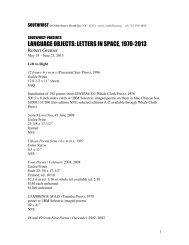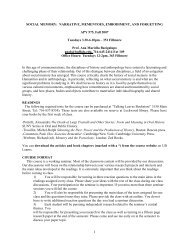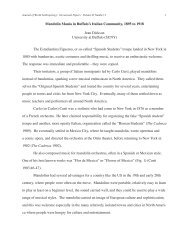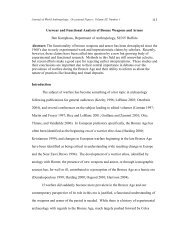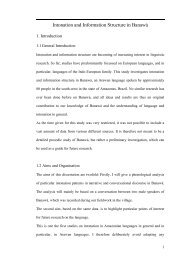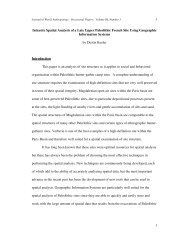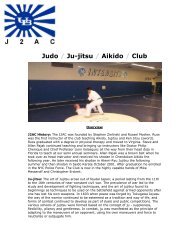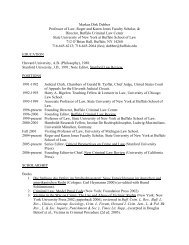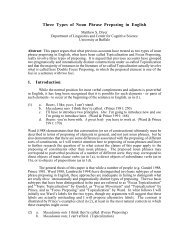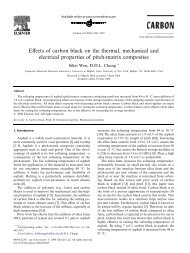Electrophysiological Evidence for Sentence Comprehension - Wings
Electrophysiological Evidence for Sentence Comprehension - Wings
Electrophysiological Evidence for Sentence Comprehension - Wings
You also want an ePaper? Increase the reach of your titles
YUMPU automatically turns print PDFs into web optimized ePapers that Google loves.
operator projection of the clause (or NP). As eADM says nothing about operators, there is<br />
nothing in the model that speaks against such a development.<br />
In short, the results confirm that the processing related to the in<strong>for</strong>mation represented on<br />
the constituent and operator projection is cognitively different and more, that the results<br />
obtained in the experiments that manipulate the operator projection are similar across<br />
experiments. The second point (i.e. the functional correspondence of components at<br />
different latencies) indicates what kind of a model could explain the results. The same<br />
latency of P600 and N400’ suggest that immediacy models (such as MUC model in<br />
Hagoort, 2003, 2005) are good candidates due to an important feature of these models:<br />
the in<strong>for</strong>mation is processed when it becomes available, not according to some fixed<br />
order. The in<strong>for</strong>mation about the time of the event described in the stimulus sentences is,<br />
on the one hand not required <strong>for</strong> the thematic role assignment (there<strong>for</strong>e, no LAN effect),<br />
but, on the other hand, it is required <strong>for</strong> the overall integration of the sentence meaning<br />
(there<strong>for</strong>e, N400’ co-occurs with P600). It should be noted that this reasoning still has a<br />
high degree of speculation due to the fact that visual stimuli are not suitable <strong>for</strong> these<br />
inferences. Acoustic stimuli, <strong>for</strong> which one can say what in<strong>for</strong>mation is available at some<br />
point in time as in Friederici’s (2002) and Hagoort’s experiments. Nevertheless, the<br />
results of the ‘case’ and ‘tense’ experiment actually corroborate RRG as a language<br />
processing model and eADM, the model which is based on RRG, to the extent the model<br />
addresses the issues raised by the interpretation of the experiments.<br />
152




